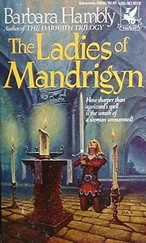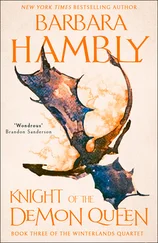“Gentlemen, I regard it as the duty of the government to improve the lives and affairs of its citizens,” Henry Clay was saying in that gorgeous voice, and Jackson’s head swiveled in his direction like an artillery-piece sighting.
“It is nothing of the kind, sir!”
He surged in Clay’s direction. As she, Sophie, and Rachel moved to head off again the volcanic violence that always seemed to bubble beneath the surface of politics, Dolley wondered if anything ever really changed.
Watching the dance of politics and civility, of what is said and what is shown, it seemed to her almost as if the War that she remembered so clearly were in another lifetime, a hundred years ago and not thirty-five. As if the storm of ink and invective had not almost torn the new Republic apart, had not severed friends, had not brought men within a step of tearing up the Constitution and throwing away everything for which they had risked their lives and those of their families. The great patriots had all gone home. Mr. Adams to his Abigail, Jefferson to his Patsy—and his Sally, in their ambiguous private world. General Washington and Martha to their “happily ever after” at last.
And in another fifty years, thought Dolley, we shall all of us be gone, too.
But the ship would sail on.
Carrying Payne, she thought with mingled foreboding and love.
Carrying General Jackson and his Rachel, young Johnny Adams and his gently bred bride, the Custis girls and Jefferson’s children and grandchildren both white and black, forward into a world she could not even imagine.
New quarrels, new issues, new leaders; new answers to the same questions of Federal and State, taxes and debts, principle and compromise, liberty and love.
She laid her hand on Mr. Clay’s arm just as Rachel caught her husband’s sleeve once more, unobtrusively, each woman turning the man aside from a quarrel that could transform a celebration into a brawl. By the time Jemmy and Jim Monroe sprang into action from their chimney-corner to head off the fracas they hadn’t even seen coming, Dolley had deftly passed Clay along to Nelly Lewis; she heard Rachel making some innocuous query of her husband about the lineage of a horse, and almost laughed.
Jemmy slipped an arm around Dolley’s waist.
“I knew I might count on you,” he whispered. Then, more loudly, he added, “Gentlemen, a toast.” He raised his cup, looked to the General to propose it.
Jackson’s glance touched Rachel’s, and she nodded shyly. He raised his cup to Dolley, and said, “I shall leave that to the Presidentress.”
Dolley caught the smile in those chilly pale eyes, saw how close he, too, kept one arm around Rachel, as if guarding her from harm. Not a complete barbarian, after all.
She raised her glass, and said, “To the world to come.”
POSTSCRIPTUM
Rachel Jackson never inhabited the White House. She died in 1828, just after her husband was elected seventh President of the United States.
Abigail Adams died in 1818, at the age of seventy-four. Both the house in which she raised her children in Quincy, Massachusetts, and the one she shared with John after their return from Europe—Stonyfield (later Peacefield) Farm—still stand. The roses and lilac she brought back from England to plant in the garden still grow there.
Her niece Louisa never married, remaining Abigail’s companion until the old lady’s death. Louisa herself died in 1857, at the age of eighty-four.
Johnny—John Quincy Adams—was elected sixth U.S. President in a four-way split that threw the hotly contested election of 1824 into the House of Representatives. He was the first second-generation President. He was also the only U.S. President to serve in the House of Representatives after his Presidential term, which he did with great distinction, for the rest of his life, literally, dying there after a stroke in 1848.
John Adams lived til 1826, dying at the age of ninety on the Fourth of July, the fiftieth anniversary of the signing of the Declaration of Independence. A few hours earlier that same day, Thomas Jefferson, aged eighty-three, died at Monticello, almost bankrupt and living under the knowledge that his treasured mountaintop haven would have to be sold to pay his debts.
With Jefferson’s death, Patsy Jefferson Randolph fled her husband and lived with her daughter Ellen in Boston until Randolph was on his deathbed, in 1828. Monticello was sold after Randolph’s death, but can—like Mount Vernon and Peacefield Farm, and Montpelier (in the process of restoration as this book is being written)—be visited today.
Martha’s beloved granddaughter Nelly went on to a life of depression and loss, seeing seven of her eight children die before her, and her ailing husband fritter away most of her share of the Custis fortune. She died in 1852, at the age of seventy-three. Wash Custis came into his share of the Custis estate and with it built the house now known as Arlington. His one surviving child by his marriage to Mary Fitzhugh—also named Mary—married the Confederate general Robert E. Lee, and they made their home at Arlington until after the Civil War, when the estate was confiscated for back taxes and turned into a national cemetery. Many Washington family mementos—including a lock of George’s hair, and Martha’s Sunday-best blue-and-white china—can be seen at Arlington today.
Payne Todd went on to a career of gambling debts and dissipations that impoverished James Madison and exhausted Dolley; in the end Dolley’s friends convinced her to tie up her money in a trust so that Payne couldn’t get his hands on it. To the end of her life, her son was trying to get from her what money he could, including trying to force her to sign a will giving him the small share she had intended to pass along to her beloved sisters Anna and Lucy, who cared for her in her final days.
Dolley lived til 1849 as the most popular hostess in Washington, to which she returned after Jemmy’s death. She was a regular guest of all five Presidents between Monroe and Polk, and the heartbeat of Washington society, though by that time she was living on the cheerfully offered charity of her many friends. Dolley Todd Madison was given what amounted to a state funeral when she died.
Payne Todd died in poverty and obscurity only three years later, at the age of sixty-one.
James Madison lived to the age of eighty-five, dying at Montpelier a few days before the Fourth of July, 1836.
He was the last surviving signer of the Declaration of Independence.
Aaron Burr outlived him by ten weeks.
SALLY HEMINGS
In the course of putting this book together, I realized that no matter how I told the story of Thomas Jefferson and Sally Hemings, I was going to offend and anger someone.
And yet, in a book about the first First Ladies, to omit the issue would leave a gaping and obvious hole.
I have done the best I can, to re-create one possible version of a relationship whose actual nature is—in the words of Fawn Brodie’s romanticized biography—simply “nonrecoverable.”
Were Thomas Jefferson to be asked on Judgment Day whether he loved Sally Hemings, my personal opinion is that he would reply defensively that he loved all his slaves: which is not the same thing as saying that he thought they were of the same species as himself. Jefferson is the most elusive (some historians would say, “two-faced”) of the Founding Fathers, saying one thing and doing another so frequently that it is almost impossible to pin down what he actually thought or felt.
The Civil War, the polemical arguments for and against abolition of slavery, the bitterness of Reconstruction and the long disgrace of race relations which followed it have so altered modern perceptions of black and white that any re-creation of even a simple relationship would be difficult to achieve, and the relationship between Jefferson and Hemings was, I believe, far from simple.
Читать дальше





